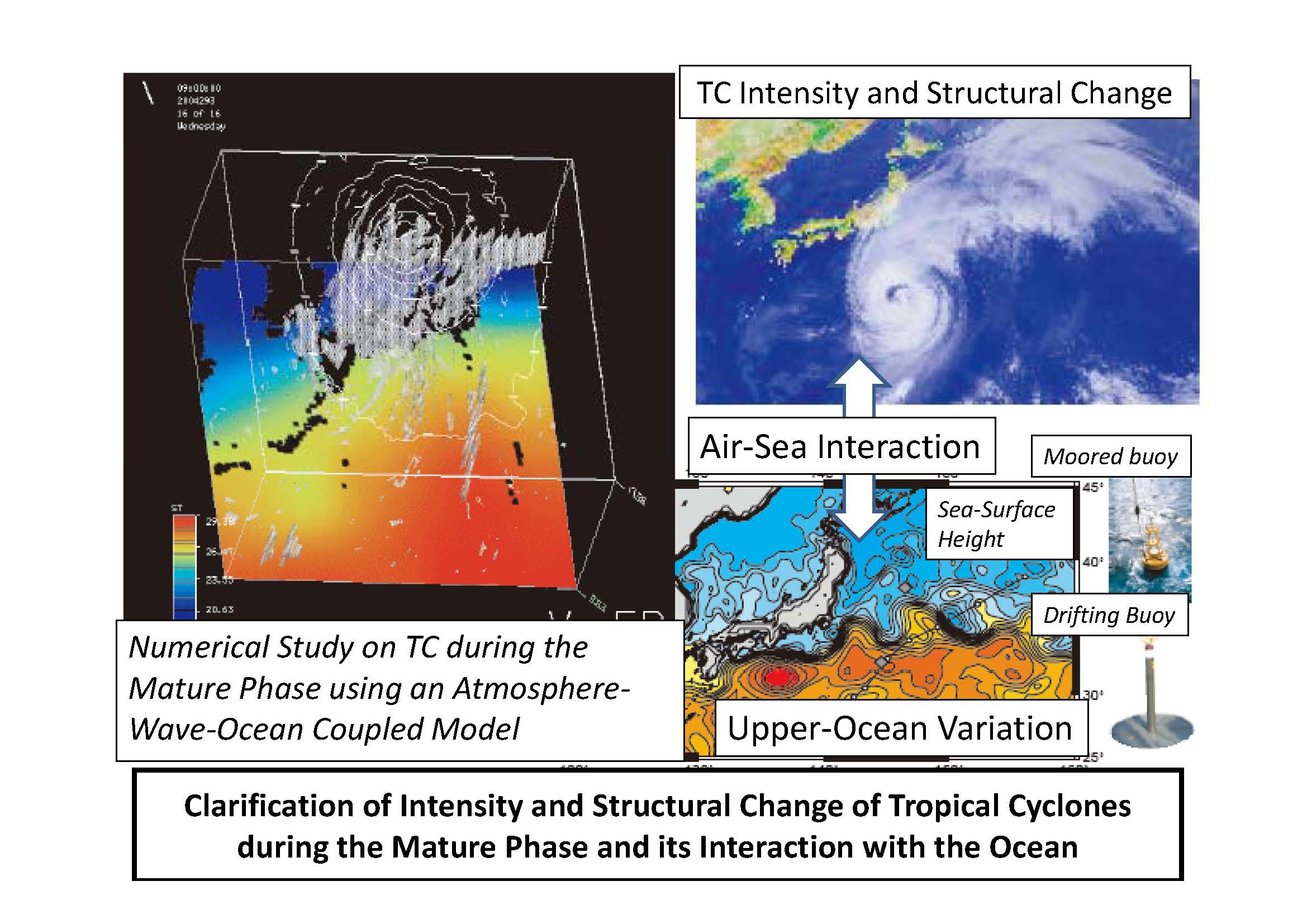Clarification of Intensity and Structural Change of Tropical Cyclones during theMature Phase and its Interaction with the Ocean
| A01-K3. Clarification of Intensity and Structural Change of Tropical Cyclones during the Mature Phase and its Interaction with the Ocean | |
|---|---|
| PI | Akiyoshi WADA# (Senior researcher, Meteorological Research Institute) |
[Doctral degree: #Meteorology]
Scope:
Tropical cyclones (TCs) are usually generated over the warm ocean. Their structure becomes axisymmetric as they intensify. After the typical storm reaches the maximum intensity represented by central pressure minimum/ maximum sustained wind speed, many reseacher has recognized that not only the intensity but also the structure of TCs are changed from the axisymmetric to asymmetric pattern, which are considered to be caused by mid-latitude jet stream and low sea-surface temperature. However, none investigated the impact of sea-surface temperature and associated air-sea turbulent heat fluxes on the intensity and structural changes of TCs.It is of inmportance in understanding a role of the upper ocean at the Kuroshio-extension region in the re-development of TCs or their extratropical transition. In addition, it is expected that this study will serve as a first step not only to understand the re-development process of mid-latitude TCs but also to understand the extratropical-transition process from a view of TC-ocean interaction. Therefore, this study aims at clarifying the upper-ocean variations associated with the changes of sea-surface temperature and air-sea turbulent heat fluxes and their interaction with TCs during the mature phase using a sophisticated atmosphere-wave-ocean coupled model with a finer horizontal resolution.
Research Plan:
- (i) Numerical simulations are performed to investigate the drastic variation of pCO2 observed at the Kuroshio Extension Observation moored buoy by passage of Typhoon Choi-wan in 2009 in following Wada et al (2011). The numerical results are validated using in situ observations.
- (ii) The impact of low sea-surface temperature and sea-surface cooling induced by passage of a TC on the intensity and structural change of a mid-latitude TC is numerically investigated. Some sensitivity numerical experiments, for example the impact of model horizontal resolution or chlorophyl concentration, are performed to study mid-latitude TC-ocean interaction if necessary.
- (iii) Numerical simulations are performed by a sophisticated atmosphere-wave-ocean coupled model to understand a role of the upper ocean in changes of intensity of structure of TCs making landfall in Japan in 2011 typhoon season.


